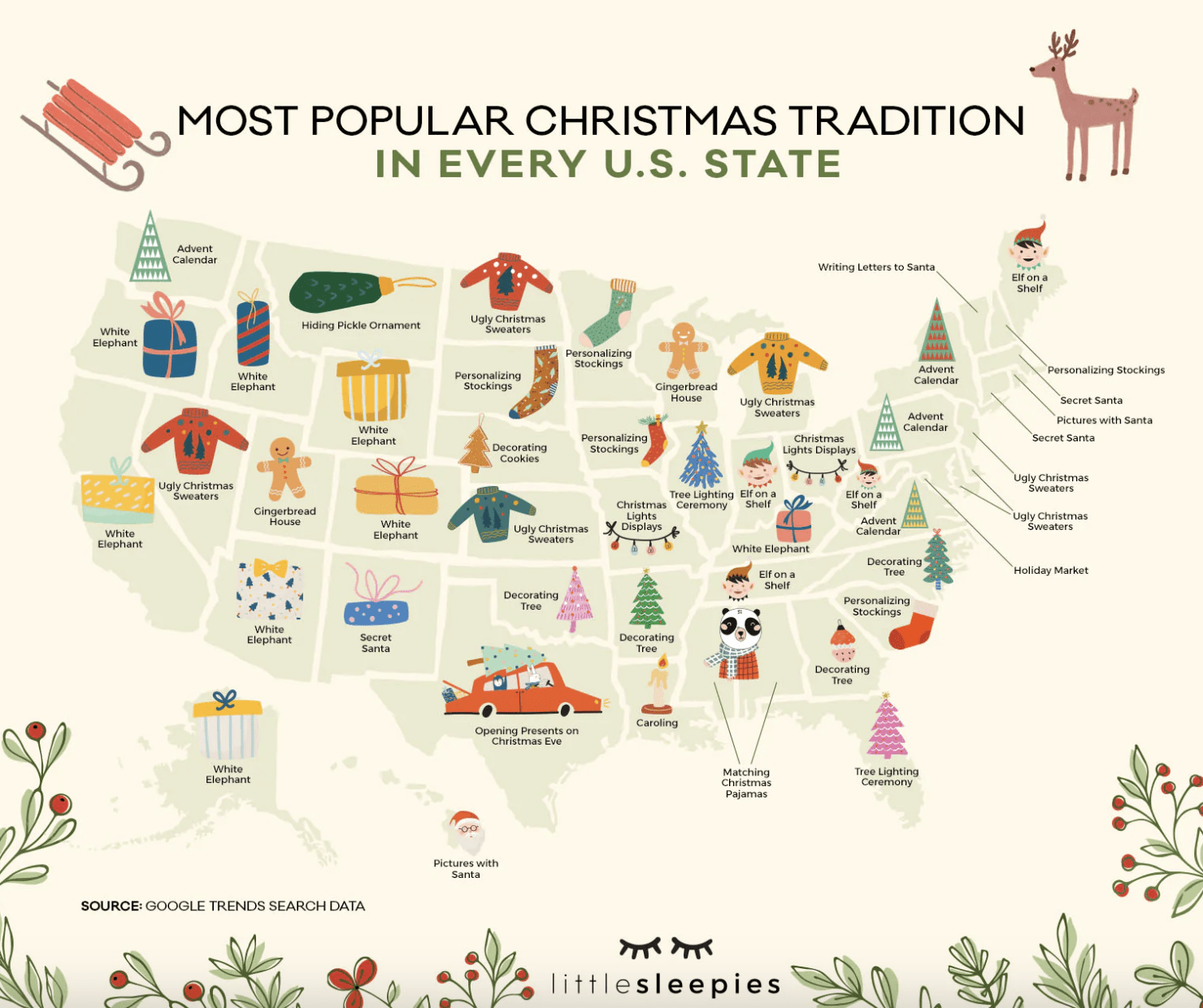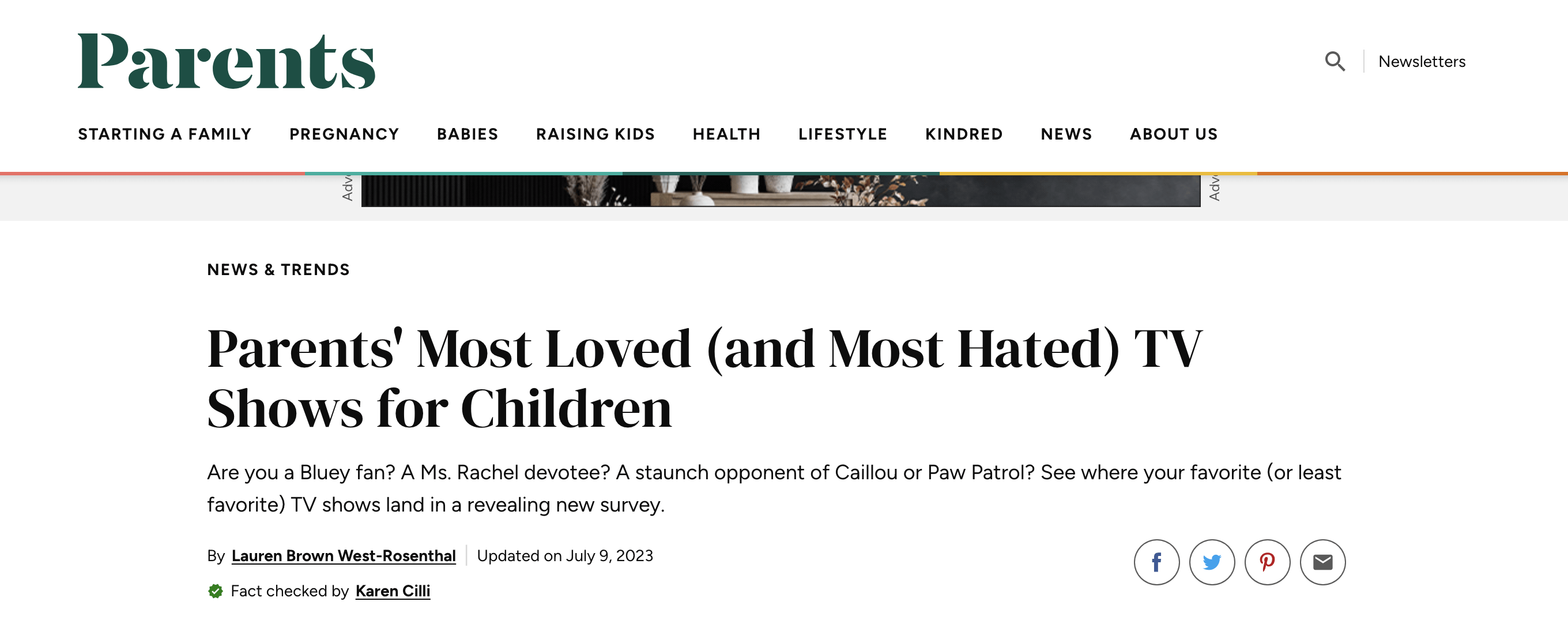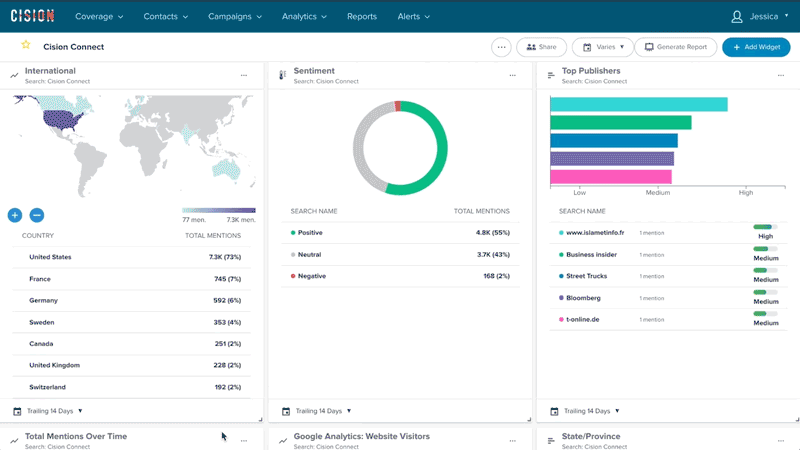The consideration phase of the purchase decision often starts in the same place: a Google search. Whether they’re hunting for product reviews or just want to know more about the company, those results can make the difference between conversion and going back to the drawing board.
Today’s empowered consumers want to feel in control of that process, and they trust the search bar to elevate the right information. Brands with great sites featuring high-quality backlinks will build trust with potential customers, and a digital PR strategy might be just what you need to rise in the rankings and make an airtight case.
Digital PR campaigns pull in customers with engaging and newsworthy content related to your brand’s offerings that appeals to a wide audience–anything from surveys or data studies to city and state rankings.
What a digital PR strategy can do for your business
Online media mentions are critical to growing awareness and online visibility and rising in the rankings on the SERP. Backlinks can also help your brand gain authority in the eyes of your target audience.
A study by Backlinko found that the number of domains linking to a page was the number one factor for ranking in Google. But backlinks alone aren’t sufficient for a true digital PR strategy.
You need to produce content that’s genuinely interesting and valuable to your target audience; it can’t just pat your brand on the back and showcase your brand’s products or services. Instead, digital PR is about providing information. Your brand takes a back seat.
A great example of digital PR is sleepwear brand Little Sleepies’ study of popular Christmas Traditions. The brand shared an infographic with the most common Christmas traditions in every US state in a visually appealing format.

Source: Little Sleepies
While this content doesn’t directly show off Little Sleepies’ products, it builds interest in the brand because it’s interesting and shareable, and the infographic invites conversation. The topic is also directly relevant to Little Sleepies’ holiday campaign: multiple states participated in the holiday tradition of matching Christmas pajamas, just like the family holiday pajamas Little Sleepies sells.
But digital PR takes it to the next level. To increase Little Sleepies’ reach and maximize the impact of the new content, Wpromote pitched its content to relevant media outlets and secured coverage on domains like Parents.com, MSN, and Yahoo. Those placements don’t just amplify the content, the associated backlinks enhance topical site authority and improve search rankings.

Source: Parents
Think of digital PR as an opportunity to have fun, show off your brand voice, and authentically connect with new audiences. So how do you find the right kind of content that will get traction with both your audience and the right media publications?
Consider putting a fresh spin on topics in the zeitgeist that your audience is interested in. For example, HomeAdvisor took two pop culture juggernauts, Wes Anderson and The Simpsons, and tapped into the popularity of both by merging their extremely different but equally iconic aesthetics. This campaign was a hit with HomeAdvisor’s audience because it shared attention-grabbing images that were true to the brand’s services without being sales-y.

Source: HomeAdvisor
That unique take on a culturally relevant theme perfectly positioned the brand for a digital PR campaign; the campaign got picked up by outlets like Apartment Therapy, Nerdist, and realestate.com that appeal to the brand’s target audience of media-savvy home decor enthusiasts.
How to choose the right publications for your brand
Any digital PR campaign starts with finding the right publications to pitch. This is the biggest difference between digital PR and content marketing: you’re looking for additional platforms to maximize the reach of your content and raise your brand’s authority with search engines.
Start with your target audience: what kind of publications and sites are they browsing? That will vary widely depending on your brand’s product or service; for example, a homeware brand might be looking to connect with first-time homeowners or weekend renovation hobbyists and look to outlets like high-authority DIY blogs or Architectural Digest.
It’s important to target relevant sites that attract a large audience. Bigger platforms have a wider reach within their field, so your brand can get in front of audiences with different lifestyles and demographics all within the same interest set.
Once you’ve found the right publications, it’s time to pitch. Tools like Cision can help you pull media contacts to reach journalists for different publications. As you craft your pitch, remember that these press contacts are like any other audience you need to appeal to–your emails have to be interesting and full of valuable information to get them to respond.

Source: Cision
Journalists are busy people, so make sure all of your points are laid out clearly (and succinctly) in your email so they have all the information they need to write an article at their fingertips. Otherwise, they might just move on to the next pitch in the inbox.
Setting your brand up for digital PR success
There are a few things to keep in mind when you launch a digital PR campaign:
- Define success: Put clear goals in place before launch to keep your campaign accountable. Your KPIs and objectives will depend on what you’re trying to accomplish, like higher traffic, an increase in brand mentions, or more backlinks. If you don’t have success metrics in place, you’re setting yourself up for failure and might make future digital PR efforts a hard sell for executive buy-in.
- Do your due diligence: When you come up with an exciting new idea, you need to do some legwork before you hit go on your pitch email. Most of all, make sure the topic hasn’t been covered a million times before. If you’re choosing a saturated topic, you’ll need to find a fresh angle that sets your brand apart from the pack.
- Keep up with the news cycle: When creating PR content, it’s always tempting to jump on the newest trend in the media, whether that’s celebrity gossip or a TikTok challenge. Trends like these can be a great way to get your brand in front of a wider audience and appeal to press–but only if you get in early. If you’re late to the game, it’s better to skip the topic rather than pitch something that’s dated by the time you launch the campaign.
- Don’t be afraid to touch on controversial topics: Hot topics can be scary for marketers. After all, your brand is trying to attract an audience, not turn people off. But if you do it right, addressing a tough and timely issue can get your brand a lot of eyes. For example, at the beginning of the pandemic, one brand surveyed people about their thoughts on vaccine passports. Their survey hit the news cycle at the perfect moment for maximum reach and was extremely successful in generating backlinks. The key is to carefully consider your stance if you’re going to weigh in. One way to lower the risk but reap the reward: create more neutral content around a controversial question, like an impartial study or infographic that can generate conversation but is less likely to offend potential customers.
No matter what audience your brand is looking to reach, digital PR campaigns can help you build trust and recognition in the upper funnel–all without spending a cent.







Responses